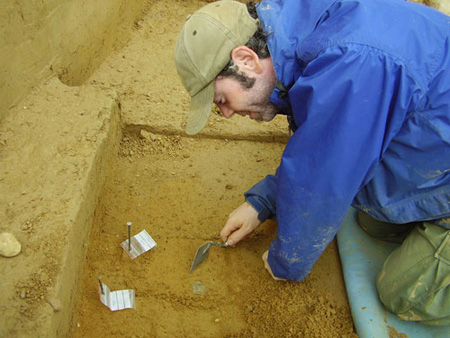
Whew! What a busy few months we’ve had here at the vivaNext headquarters! No doubt a lot of people have been enjoying this great summer weather and taking a bit of a break… but for those of us here, it’s been full steam ahead. Since we announced the news this past May that Metrolinx approved a revised capital funding schedule for the vivaNext rapidways, our office has been a hive of activity! Okay, I took a week off as well to enjoy this summer weather.
But here’s an exclusive peek behind the scenes of what’s happening with vivaNext projects.
Although it’s not a typical rapidway station, our new stop currently under construction at Enterprise and Warden in Markham will be the first place you’ll be able to try out our new, comfortably designed vivastation. The concrete foundations are currently being put in for the station, and sometime in early fall we expect to receive the glass canopy from the fabricators. After all the work that went into designing it, we can’t wait to see the vivastation in person! We’ll keep you updated on the delivery dates and let you know more about how you can see it too!
Our crews are out and about along Davis Drive in Newmarket, with most work presently focused on pre-construction activities in preparation for the road widening. We’ve been taking down some existing buildings, and working closely with Habitat for Humanity York Region and other organizations to ensure that every last piece of building material that can be reused or recycled is diverted from landfill. At least 85% of materials will be diverted – we are really proud of that. Even shrubs, plants and trees have been transplanted to new locations within Newmarket, including some churches and a public school.
Our engineers, architects and other experts are working hard on the preliminary engineering for the rapidways up Yonge Street and along Highway 7. Preliminary engineering is the early design stage of an infrastructure project, and it involves numerous hours of discussion and planning for options on things you may never think about when you drive down a street; things like median width, lightpole design and surface treatments. Every step of their work is carried out in conjunction with a number of other partners, including The Regional Municipality of York and each of the municipalities, as well as other local groups. The amount of painstaking, detailed work that goes into designing a rapidway is just incredible – in a separate blog, I’ll tell you more about the processes, the challenges and introduce you to some of our experts.
We are also spending a lot of time working with our colleagues at the TTC on plans to connect the Spadina Subway extension to the vivaNext transit hub at Highway 7 in the Vaughan Metropolitan Centre. Construction of a six-lane bridge, access roads, traffic signals, utility relocation and the realignment of a portion of Black Creek is now underway so that construction can start on the Highway 407 Station. This work is anticipated to be complete by spring 2011. Public open houses in July showcased the station design finishes and public artwork for the Sheppard West and Highway 407 Stations. More open houses will soon be held, so that the public can view the four remaining station designs. I hope to tell you more exciting details about the design ideas we’re working on in the near future.
Another key task that represents a huge amount of our efforts is the ongoing Environmental Assessment process – and rightly so: ensuring that our projects don’t negatively affect the environment, either natural or human, is a critical priority for this project. Each rapidway segment has its own process and requirements – in fact, there’s so much to describe, I’m going to save it for another time!
During the summer we also participated in some fundraising events for United Way, attended several community events and participated in some local industry workshops.
So that was a brief summary of what we’ve been up to! We hope you’re enjoying the summer sunshine, and all of the great things there are to do in York Region!

